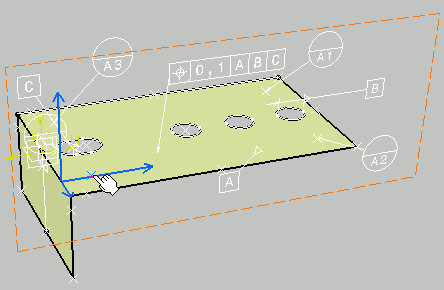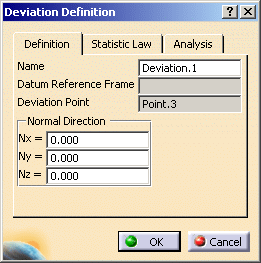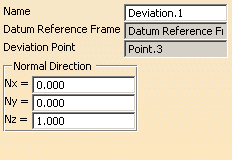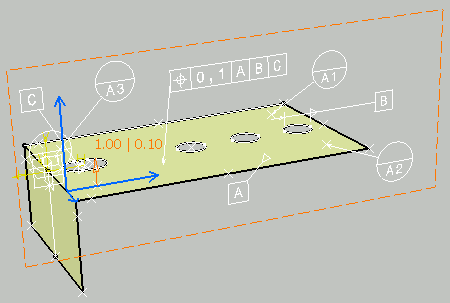- A deviation annotation represents a specified or measured point according to a statistics law.
- The deviation annotation of an assembly component is contained in its
annotation set:
- For a leaf assembly component, deviation annotations represent the input annotations or initial annotations.
- For a parent assembly component, deviation annotations represent the output annotations or annotations to be verified.
- A deviation annotation is always associated with a datum reference frame.
- This datum reference frame must be:
- isostatic at least.
- associated with the assembly component where the deviation is created.
-
Click Deviation
 in the Deviations toolbar.
in the Deviations toolbar.Select a point or a vertex. For the purpose of this scenario, select Point.3.

The Deviation Definition dialog box appears.
-
Select the deviation datum reference frame, in this case Datum Reference Frame.3.
-
Set Z as the normal direction.

-
Click the Statistic Law tab to select and define the desired law.
Six laws and their parameters are available: Normal, Uniform, Constant, Pearson, Poisson and Snedecor. For more information, refer to Statistic Laws. -
Click the Analysis tab to select and define the desired analysis.
Two analyses are available:-
Local: the deviation annotations are taken into account where they are defined only
-
Global: the deviation annotations are interpolated on the part or the product.
-
-
Click OK. The deviation annotation is created.
